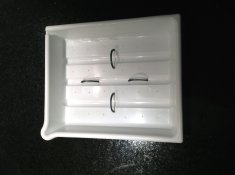Since I have recently converted a bedroom to a dedicated darkroom I have been contemplating switching to tray development of my 4x5 exposures, currently I use the Comi-Plan, which I really can't complain about. But I wonder, for those who have fair experience with both, which method do you prefer and why? I'm not interested in Jobo processing or any other processor, so no need for that insight, thanks. Is there some general quality of tray development over daylight inversion tank development with 4x5 that I could be missing out on----I've always wondered about constant agitation with tray development too? I want to try this route for information from folks before I may try it. Film costs too much these days with three boxes of film from my latest order (1 TMY $86.50 and 2 TXP $79.95 each) costing $235. Sorry if the question is vague, but who out there processed 4x5 in a daylight tank, then tried trays, and was just wowed by it and never looked back?
Thanks
Chuck
Thanks
Chuck














